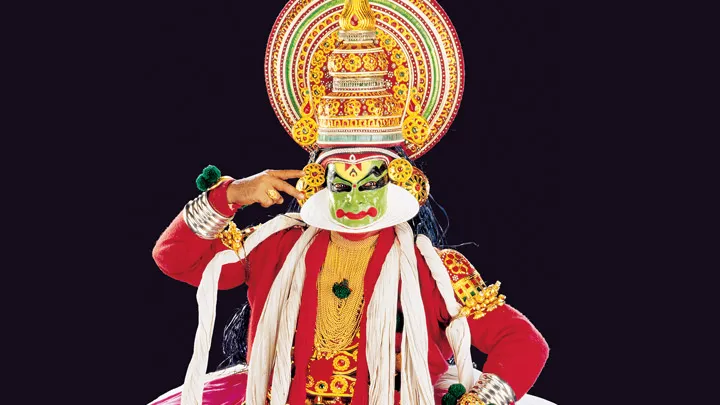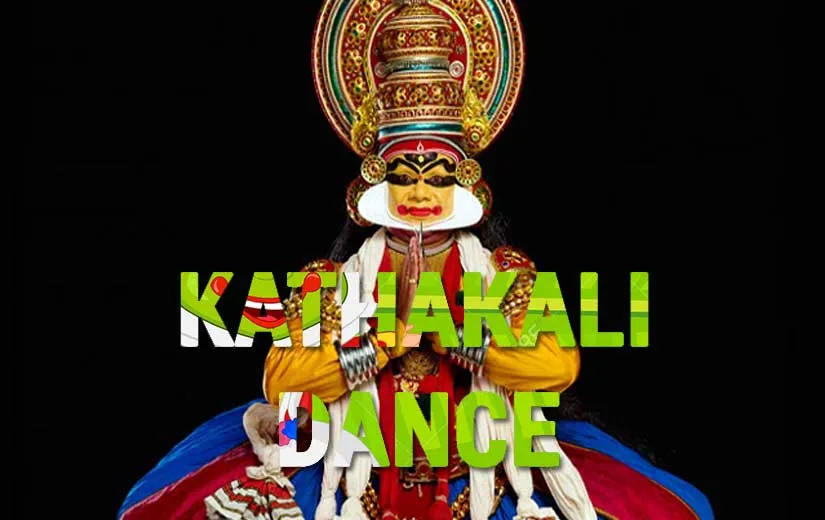Kathakali is one of the major forms of classical Indian dance.[1] It is a "story play" genre of art, but one distinguished by the elaborately colorful make-up, costumes and facemasks that the traditionally male actor-dancers wear. [2][3][note 1] Kathakali primarily developed as a Hindu performance art in the Malayalam-speaking southwestern region of India.
The traditional themes of the Kathakali are folk mythologies, religious legends and spiritual ideas from the Hindu epics and the Puranas.[7] The vocal performance has traditionally been performed in Sanskritised Malayalam.[6] In modern compositions, Indian Kathakali troupes have included women artists,[4] as well as adapted Western stories and plays such as those by Shakespeare and from Christianity.

Kathakali Make-up
The costume is elaborate andthe faceis painted in vivid hues. The Vesham or make-up is of five types - Pacha, Kathi, Thadi, Kari and Minukku.
The pomp and magnificence of Kathakali is partly due to its décor, part of which is the kireetam (huge ornamental headgear) and the kanchukam (over sized jackets), and a long skirt worn over a thick padding of cushions. The artists completely immerse themselves and the audience into the story they're describing.
Pacha (Green)
Pacha Vesham or the green make-up portrays noble protagonists.
Kathi (Knife)
Kathi Vesham portrays villainous characters.
Thadi (Beard)
There are three types of beards or Thadi Veshams. VellaThadi or White beard for superhuman monkeys like Hanuman. ChuvannaThadi or Red beard meant for evil characters. KaruthaThadi or Black beard for the hunter.
Kari (Black)
Kari Vesham is used for she-demons.
Minukku (Prettying Up)
The "Minukku Vesham" is used for female characters and sages.
Mudra
Mudra is a stylised sign language used to depict an idea, a situation or a state of being. A Kathakali actor enacts his ideas through mudras. For this the actor follows a systematic sign language based on Hastalakshana Deepika, a treatise on the language of hand gestures.
Kathakali Music
Kathakali orchestra is formed of two varieties of drums - the maddalam and chenda; the chengila which is a bell metal gong and the ilathalam or cymbals.
Kathakali Training
Students of Kathakali have to undergo rigorous training replete with oil massages and separate exercises for eyes, lips, cheeks, mouth and neck. Abhinaya or expression is of prime importance as is nritya or dance and geetham or singing.
Kathakali said to have evolved from other art forms like Kutiyattam, Krishnanattam and Kalaripayattu. Kerala Kalamandalam is among the foremost centres for Kathakali training in the traditional way.
